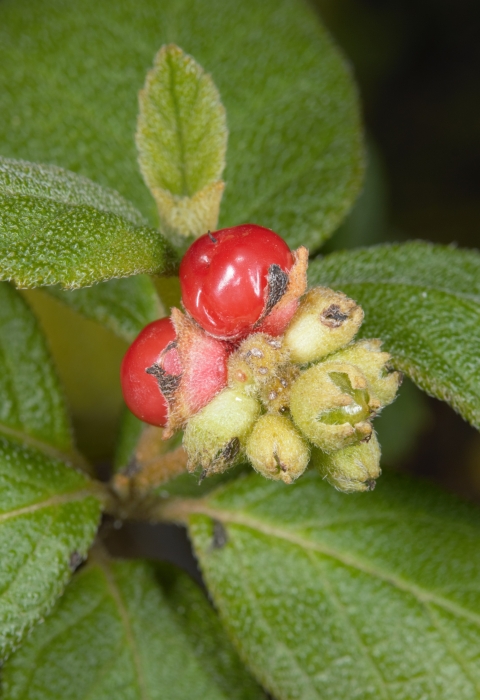The U.S. Fish and Wildlife Service announces the availability of a draft recovery plan for Varronia rupicola, a plant native to Puerto Rico, Vieques, and the island of Anegada in the British Virgin Islands. Varronia rupicola was listed as a threatened species under the Endangered Species Act (ESA) in 2014. This draft plan includes specific criteria for determining when Varronia rupicola should be considered for delisting, removing it from the Federal List of Endangered and Threatened Plants. It also lists site-specific actions that will be necessary to meet those criteria and estimates the time and costs required for implementing actions necessary to achieve recovery. The draft recovery plan for the plant is now available at the following website: https://ecos.fws.gov/ecp/species/6258
A woody shrub that may reach up to 16 feet tall, Varronia rupicola is currently the subject of research and conservation efforts by several institutions, including the Royal Botanical Garden (Kew); University of Puerto Rico, the British Virgin Islands National Park Trust, Vieques National Wildlife Refuge, and the Caribbean Ecological Services Field Office. The ongoing research will provide key information on the species’ reproductive biology, biogeography, and will help develop propagation protocols providing for the development of a sound recovery plan.
In order to promote and support the conservation and survival of endangered species and threatened species, and provide a transparent path to achieving recovery, we and our partners develop and implement recovery plans. Recovery plans are unique to each species and serve as central organizing tools that provide important guidance on methods of minimizing threats to listed species, such as restoring and acquiring habitat, removing introduced predators or invasive species invasive species
An invasive species is any plant or animal that has spread or been introduced into a new area where they are, or could, cause harm to the environment, economy, or human, animal, or plant health. Their unwelcome presence can destroy ecosystems and cost millions of dollars.
Learn more about invasive species , conducting surveys, monitoring individual populations, and breeding species in captivity and releasing them into their historical range. Recovery plans identify measurable and objective criteria against which progress towards recovery of a species can be tracked over time. Recovery plans are guidance and not regulatory documents, and no agency or entity is required by the ESA to implement actions in a recovery plan.
For more information on Varronia rupicola, visit the Service’s Species Profile below or contact Omar A, Monsegur-Rivera at omar_monsegur@fws.gov.
https://www.fws.gov/species/puerto-rico-manjack-varronia-rupicola
The mission of the U.S. Fish and Wildlife Service is working with others to conserve, protect, and enhance fish, wildlife, plants, and their habitats for the continuing benefit of the American people. For more information on our work and the people who make it happen, visit www.fws.gov/southeast. Connect with us on Facebook at www.facebook.com/usfwssoutheast, follow our tweets at www.twitter.com/usfwssoutheast, watch our YouTube Channel at http://www.youtube.com/usfws, and download photos from our Flickr page at http://www.flickr.com/photos/usfwssoutheast.



